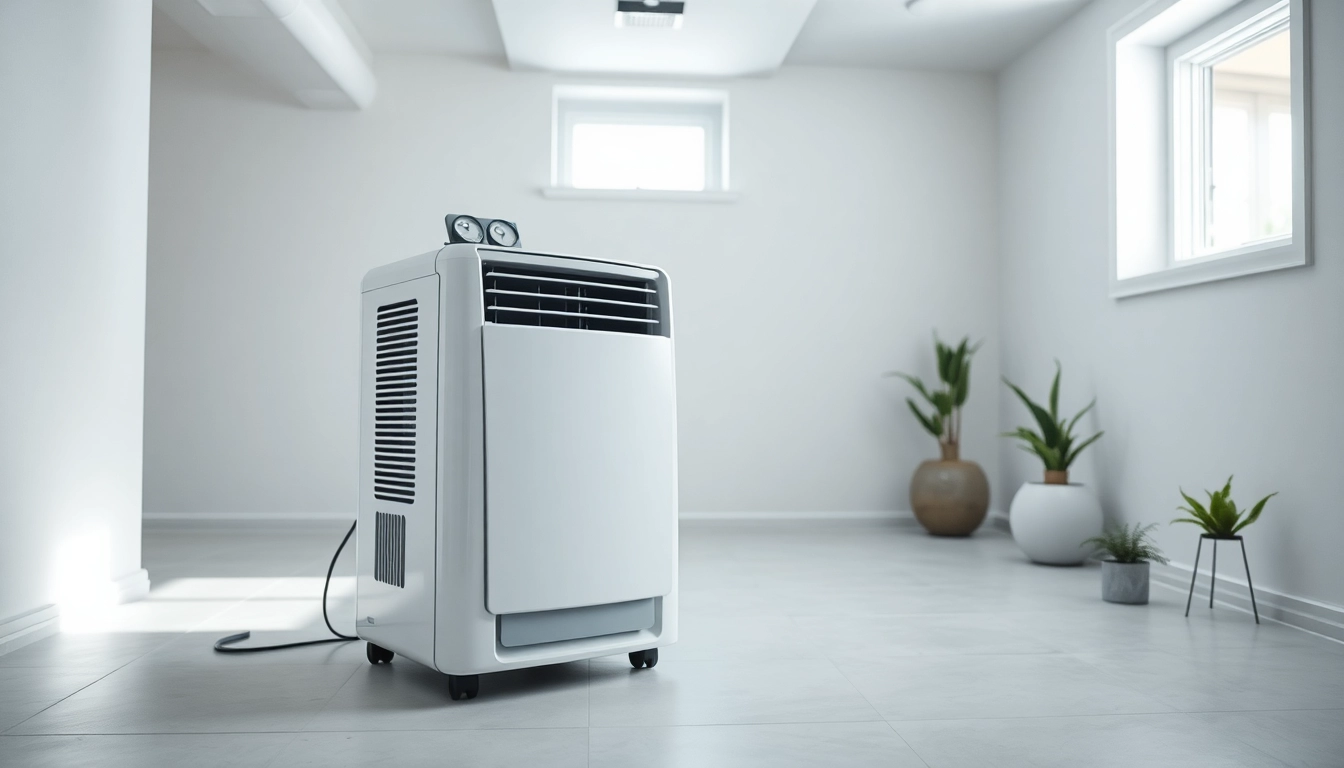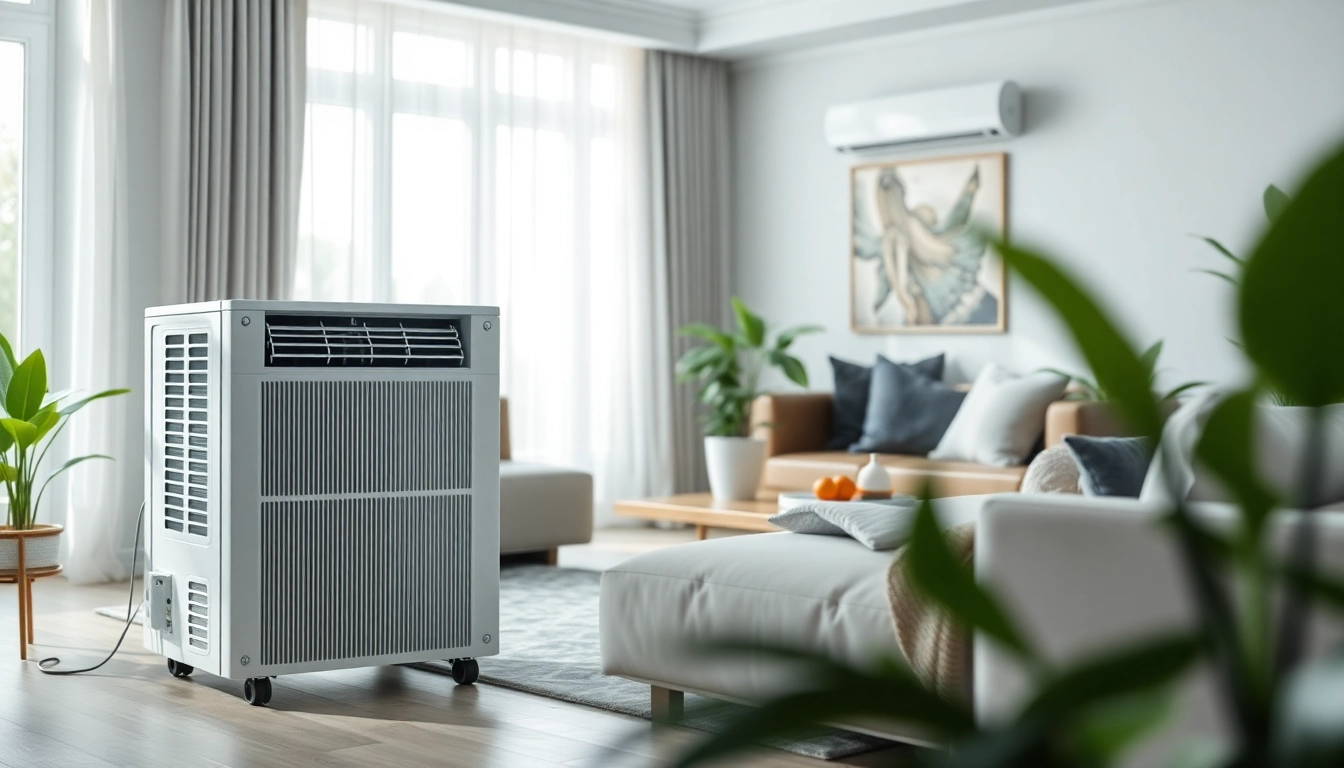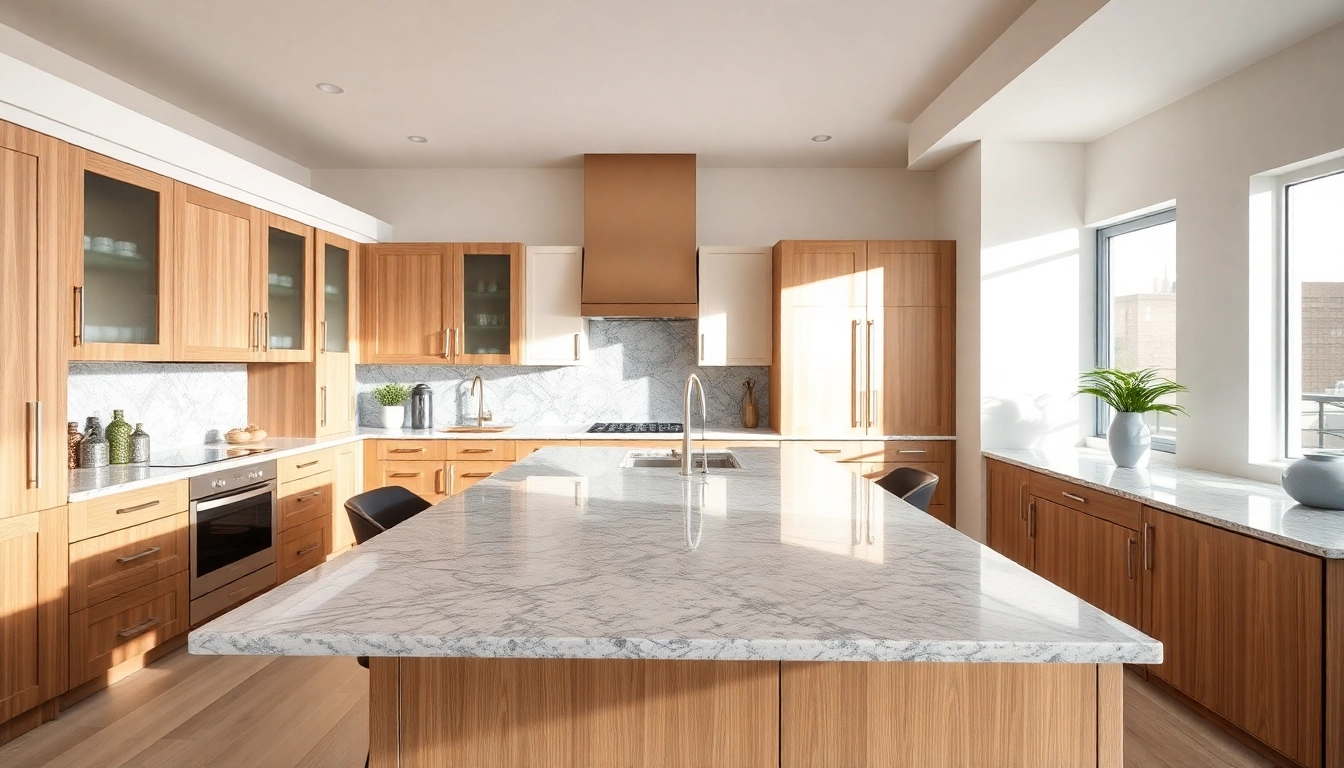Understanding Basement Dehumidification
What is Basement Dehumidification?
Basement dehumidification refers to the process of removing excess moisture from the air in a basement, which is crucial for maintaining a dry and healthy living environment. This process is typically achieved through the use of dehumidifiers, which work to lower humidity levels in enclosed spaces that are prone to dampness. Basements often suffer from high humidity due to condensation, ground moisture, or flooding, making proper moisture control essential. Effective basement dehumidification provides not only comfort but also protects your home from challenging issues such as mold growth and structural damage.
Why is Basement Dehumidification Important?
The importance of basement dehumidification cannot be overstated. High humidity levels in basements can lead to a myriad of problems, compromising not only the structural integrity of your home but also the health of its occupants. Moist environments are breeding grounds for mold and mildew, which can cause respiratory issues and allergies. Additionally, moisture can weaken the foundation and lead to wood rot, jeopardizing the overall safety and value of your home. Thus, investing in effective dehumidification systems is vital for long-term home health and property maintenance.
Common Signs of Excess Moisture
Recognizing the signs of excess moisture is the first step toward effective basement dehumidification. Here are some indicators that your basement may be suffering from high humidity:
- Musty Odor: A damp, musty smell often indicates the presence of mold or mildew.
- Condensation: Water droplets forming on walls, windows, or pipes are clear signs of high humidity levels.
- Mold Growth: Visible mold patches on walls, floors, or stored belongings signal excessive moisture.
- Water Stains: Dark spots or streaks on walls and floors suggest water intrusion.
- Peeling Paint: Paint that is bubbling or peeling can be the result of moisture buildup behind the surface.
Choosing the Right Dehumidifier
Types of Basement Dehumidifiers
When selecting a dehumidifier for your basement, it’s important to consider the various types available on the market. The main categories include:
- Desiccant Dehumidifiers: These units use a desiccant material to absorb moisture from the air. They are particularly effective in colder temperatures and are often quieter than their refrigerative counterparts.
- Refrigerative Dehumidifiers: These work by cooling air to condense moisture, making them more efficient at higher humidity levels. Most home dehumidifiers fall into this category.
- Whole-House Dehumidifiers: Ideal for large homes, these systems integrate with your HVAC to regulate humidity throughout the entire house, not just the basement.
Key Features to Consider for Basement Dehumidification
When selecting a dehumidifier, keep an eye out for these essential features:
- Capacity: Measure the capacity according to the square footage of your basement. Units typically range from 30 to 90 pints per day.
- Energy Efficiency: Consider the Energy Factor (EF) rating to ensure lower energy consumption.
- Built-In Humidistat: A humidistat allows for automatic adjustment based on current humidity levels, enhancing energy savings.
- Auto Restart: Units with this feature will resume operation automatically after a power failure, maintaining consistent humidity control.
- Drainage Options: Some dehumidifiers offer continuous drainage to avoid the hassle of frequent water collection.
Energy Efficiency Ratings and Costs
Understanding energy efficiency ratings can help you choose a cost-effective solution for your basement dehumidification needs. Look for units with high Energy Star ratings, which indicate superior efficiency. Although initial costs may vary widely based on features and capacity, considering energy usage will yield savings in the long run. Always factor in the total cost of ownership—including potential repairs and maintenance—when evaluating your options.
Installation Best Practices
Preparing Your Basement for Dehumidification
Before installing a dehumidifier, proper preparation of the basement is crucial. Begin by conducting a thorough inspection of the space. Here’s how:
- Seal Entrances: Check windows or doors for leaks and ensure a tight seal to maintain humidity levels.
- Identify Moisture Sources: Assess potential moisture sources such as cracks in the foundation or indoor plumbing issues.
- Clean the Space: Remove clutter and dirt that can trap moisture and impede airflow.
Proper Placement of the Dehumidifier
The placement of your dehumidifier is important for optimal performance. Here are some placement tips:
- Central Location: Place the unit in a central location to effectively circulate air throughout the basement.
- Avoid Walls and Corners: Position the unit at least 12 inches away from walls to prevent airflow obstruction.
- Elevated Position: If possible, place the dehumidifier on a raised platform to enhance air circulation.
Sealing Gaps for Effective Performance
To maximize the effectiveness of your dehumidifier, sealing gaps and cracks is essential. Apply weather stripping around windows and doors, and consider using caulk to seal cracks in concrete walls and floors. This proactive step not only aids in moisture control but also improves energy efficiency, reducing heating and cooling costs.
Maintenance and Troubleshooting
Regular Maintenance Tips for Your Dehumidifier
Consistent maintenance is key to prolonged dehumidifier performance. Here are some maintenance tips:
- Clean or Replace Filters: Check filters monthly and replace them as required to ensure optimal airflow.
- Empty the Water Bucket: If your unit does not have a continuous drainage option, be vigilant about emptying the water reservoir to prevent overflow.
- Inspect Coils: Regularly clean the coils to remove dust and debris that can hinder effectiveness.
Troubleshooting Common Issues
Even the best dehumidifiers can run into issues. Here are common problems and their potential solutions:
- Dehumidifier Not Collecting Water: This could be due to a clogged filter, low humidity levels in the basement, or a malfunctioning unit.
- Unit Stops Running: Check for power supply issues, or ensure the water reservoir is empty if it lacks a continuous drainage feature.
- Noisy Operation: Inspect for loose parts or debris around the fan that may be causing unusual sounds.
Signs of Dehumidifier Inefficiency
Monitoring your dehumidifier’s performance is crucial for effective basement moisture control. Signs of inefficiency include:
- Reduced Water Collection: If your unit is consistently collecting less water than expected, it may be time for a maintenance check.
- Increased Humidity Levels: Noticeable humidity creeping back in despite operation signals potential failure.
- Frequent Fluctuations: Rapid changes in humidity levels may indicate insufficient air circulation or performance issues.
Long-Term Benefits of Effective Basement Dehumidification
Improving Air Quality in Your Home
Effective basement dehumidification plays a vital role in improving indoor air quality. By controlling humidity levels, you prevent conditions conducive to mold and dust mites, which are common triggers for allergies and asthma. Clean, dry air is essential for maintaining a healthier living environment for all occupants.
Preventing Mold and Structural Damage
One of the most significant benefits of proper dehumidification is the prevention of mold and structural damage. Maintaining humidity below 60% ensures that mold spores cannot thrive, thereby protecting the integrity of your home. Additionally, excessive moisture can deteriorate wood structures and weaken foundations. Regular dehumidification minimizes these risks, extending the life of your property.
Enhancing Home Value with Proper Moisture Control
A well-maintained basement enhances your home’s value significantly. Prospective buyers often view a dry and clean basement as a major advantage, providing peace of mind that the property is well-cared for. Effective moisture control is, therefore, not just a maintenance concern—it’s also an investment in your property’s long-term value.














Leave a Reply